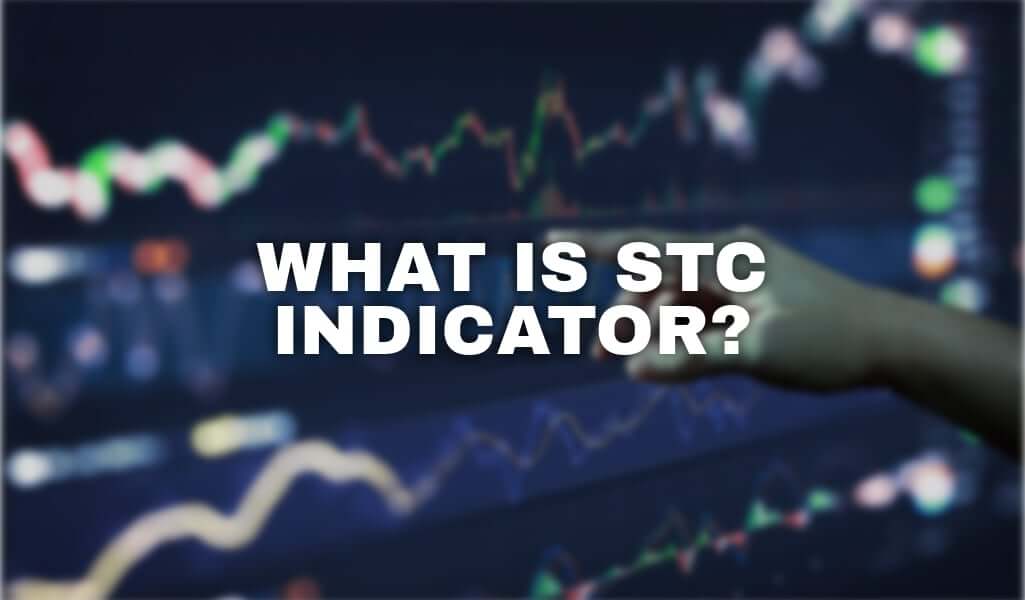
What is STC indicator: Schaff Trend Cycle Indicator
STC indicator represents combinations of market cycles analysis with moving average. It’s a powerful tool for identification of trend reversal. It measures the speed of trend reversals and the strength of the trends. Let’s see in detail how it can be beneficial in your trading.
STC indicator Key Takeaways
- The Schaff Trend Cycle (STC) is a technical analysis indicator that helps traders identify trends and their strength more effectively than MAs.
- STC indicator can be more accurate than the MACD.
- It provides smoother and more responsive trend data.
- Users should exercise caution as the STC can remain in overbought or oversold zones for extended periods, which may affect its reliability in certain market conditions.
What is an STC oscillator?
The Schaff Trend Cycle (STC) indicator is a forward-looking, cyclical oscillator. It’s a unique blend of the common indicators of MA and MACD. Developed by currency trader Doug Schaff in 1999, STC operates on the premise that currency trends accelerate and decelerate in cyclical patterns.
STC is a type of technical analysis tool that aims to identify trends more quickly than traditional indicators. It uses the same EMA (exponential moving average) principles as MACD but adds a novel cycle component to improve accuracy and reliability.
Similarities and Differences Between the STC and the MACD

Both the MACD and STC indicators use exponential moving averages (EMAs) to identify market trends. They generate signals through crossovers and divergence from the price chart.
However, the STC refines the MACD by incorporating a cycle component, which aims to reduce lag and produce faster signals. While MACD traditionally uses a signal line for crossovers, the STC adds the 25 level and 75 level thresholds to better identify overbought and oversold conditions.
The main difference lies in the STC’s cycle element. It enhances its ability to detect trend reversals more promptly compared to the MACD’s focus on the convergence and divergence of moving averages.
How to spot and interpret STC indicators in a chart?
STC indicator plots the results on a scale ranging from 0 to 100, with designated 25 and 75 levels. These specific levels help in pinpointing the optimal entry and exit points, thus generating buy and sell signals.
When the STC line crosses above 25, it indicates a potential long position or a buy signal. Conversely, a line cross below 75 may suggest it’s time to sell or take a short position.
A critical feature of the STC indicator is its ability to detect faster and more accurate trend reversals. It reduces the lag from signals that you may typically experience with MACD. The STC does this by using a 23- and 50-period EMA with a cycle component that doubles the MACD.
Traders often seek the point where the STC line crosses the signal line to identify trends. These line crosses are a nod to the traditional MACD and act as a pointer for shifting market conditions.
If the STC line crosses above the signal line, the market is likely entering a bullish trend. If it crosses below, a bearish trend might be starting.
Importance of 25 and 75 level in STC indicator

The level 25 and 75 level are crucial in this analysis. When the STC line remains between these levels, it indicates a stronger trend.
A move that extends beyond these bounds suggests overbought and oversold levels. For instance, if the STC line moves above 75, the market could be overbought. Dropping below 25 may indicate it is oversold.
Doug Schaff’s creation combines the best of moving averages with the cycle element to offer a comprehensive view of the market.
t allows traders to anticipate trend reversals earlier than with other indicators. This timing is essential, especially when aiming to capture the entire trend for maximum profit.
Advantages of STC indicator
Technical analysts consider the STC a valuable addition to their toolkit, helping them to fine-tune entry and exit points.
The average convergence divergence MACD principle combined with the cycle element makes STC a unique and dynamic indicator. The signal line cross offers explicit buy or sell indicators that are easy to observe and act upon.
For traders and analysts, the Schaff Trend Cycle stands out for its simplicity and effectiveness. It provides a fresh take on the quest to identify trends in the ever-changing landscape of market conditions.
By adhering to the 25 and 75 levels for trend strength and reversals, STC can become a cornerstone for strategies aimed at both bullish and bearish market scenarios.
Conclusion
The Schaff Trend Cycle (STC) indicator is a cyclical oscillator that predicts currency market trends with a blend of MA and MACD. It aims to identify trends faster than conventional tools by incorporating a unique cycle component to enhance accuracy and reduce signal lag. The STC sets itself apart from the MACD with this cycle feature, which helps it detect trend reversals more quickly. This indicator can really move the needle in your trading success.
The post What is STC indicator: Schaff Trend Cycle Indicator appeared first on FinanceBrokerage.
